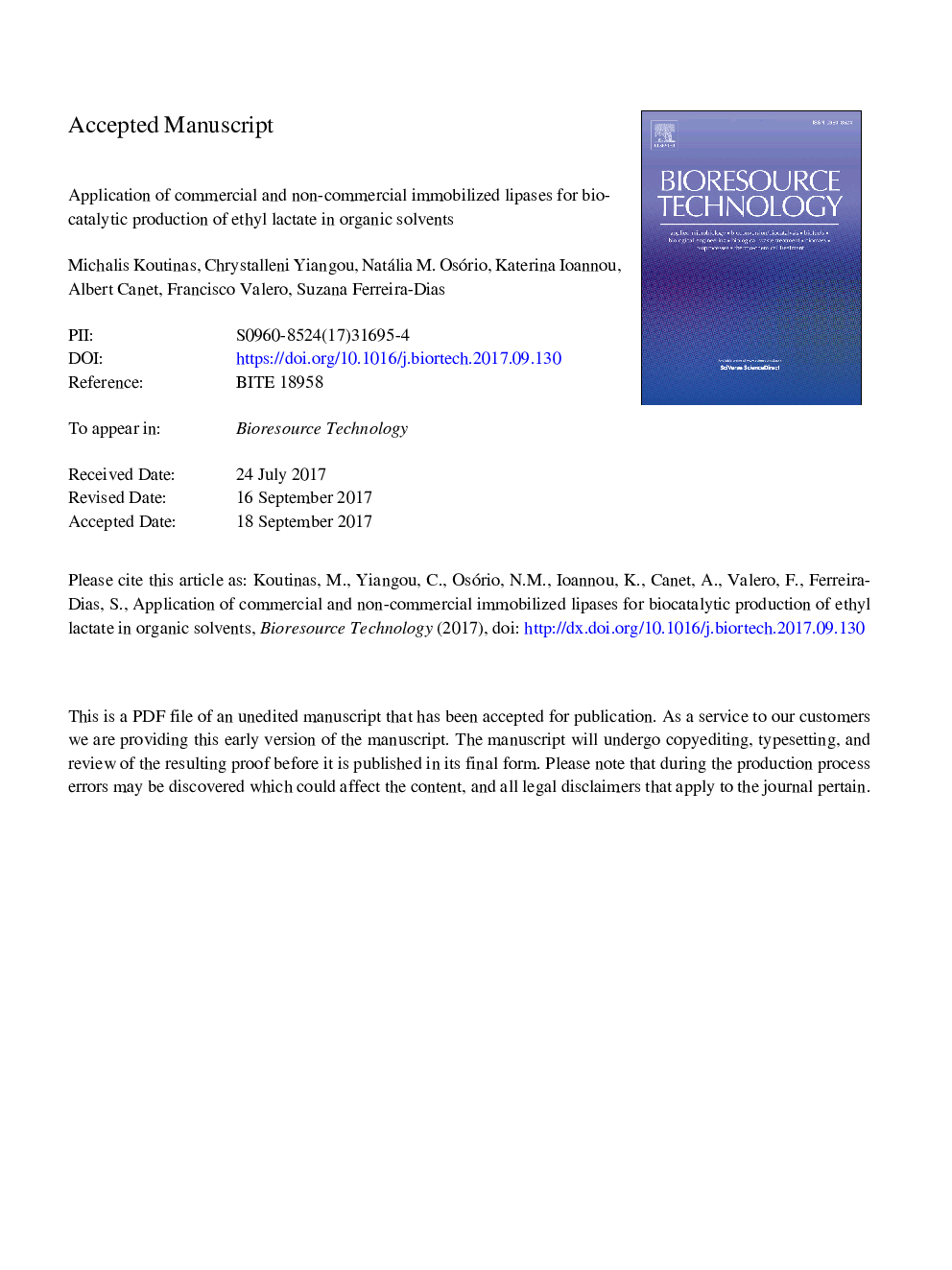| Article ID | Journal | Published Year | Pages | File Type |
|---|---|---|---|---|
| 4996669 | Bioresource Technology | 2018 | 36 Pages |
Abstract
This study explores the potential for enhancing the production of ethyl lactate (EL), a green solvent, through enzymatic esterification. Different solvents were compared as organic media for conversion of lactate and ethanol into EL, catalyzed by Novozym 435. Chloroform and hexane were the most effective in low acid concentrations (0.01-0.1 M) exhibiting maximum EL yields of 88% and 75% respectively. The yield of EL improved as the solvent's Log P increased up to a value of 2. Non-commercial immobilized biocatalysts consisting heterologous Rhizopous oryzae (rROL) and Candida rugosa (CRL) lipases immobilized on hydrophobic supports were compared to commercial biocatalysts clarifying that Novozym 435 and Lipozyme RM IM could be efficiently applied. Operational stability tests were conducted using Novozym 435, which retained higher activity in chloroform as compared to hexane. Although non-commercial biocatalysts were not competitive in esterification, they exhibited significant activity towards hydrolysis constituting a valuable alternative to higher-cost options.
Keywords
Related Topics
Physical Sciences and Engineering
Chemical Engineering
Process Chemistry and Technology
Authors
Michalis Koutinas, Chrystalleni Yiangou, Natália M. Osório, Katerina Ioannou, Albert Canet, Francisco Valero, Suzana Ferreira-Dias,
